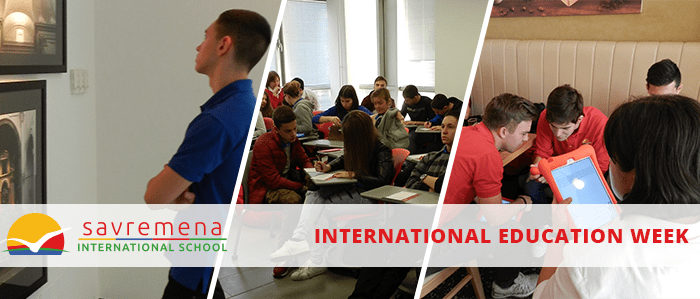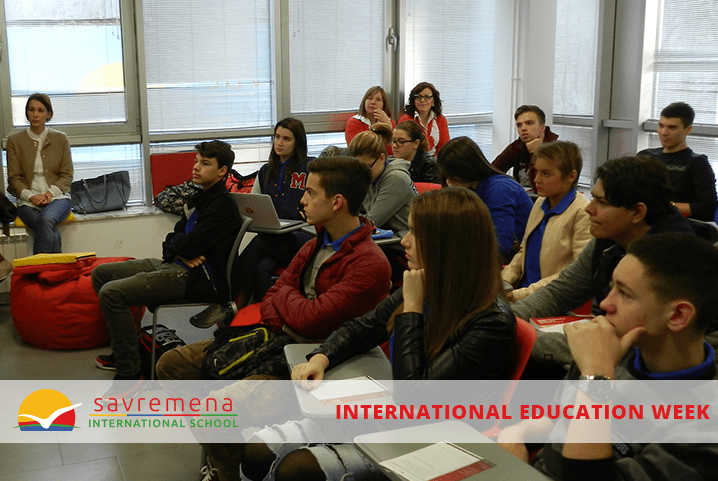
The Savremena International School celebrated last week the International Education Week under the slogan “My International Journey”.
On that occasion, the students and teachers of Savremena International School organised different activities thus contributing to this important international event. In addition to having learned a lot through games and fun time, the students had the opportunity to exchange their experience.
Intercultural exchange
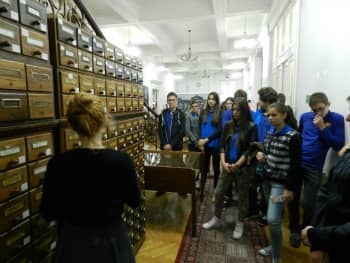 During The International Education Week, our students visited The Austrian Library and Cervantes Institute.
During The International Education Week, our students visited The Austrian Library and Cervantes Institute.
They enjoyed their visit, heard interesting stories about the contribution of these institutions in spreading Hispanic and Germanic culture and attended lectures that their hosts prepared for them.
That way, the photo exhibition entitled “El Greco - the artist’s altarpieces inspired students to learn more about this artist’s culture.
Also, they were given an opportunity to visit the exhibition that was devoted to work and art of Germanic authors such as Thomas Mann and Rainer Maria Rilke.
Connection with peers from abroad
 One of the advantages of visiting these institutions for our students is discovering the ways in which they can connect with their peers from abroad who also study German or Spanish.
One of the advantages of visiting these institutions for our students is discovering the ways in which they can connect with their peers from abroad who also study German or Spanish.
Apart from meeting new acquaintances and improving their foreign language competences, our students that they also had graded books and comic books at their disposal. There are also the so-called olympiads where students can meet different people from abroad and compete with them in knowing languages and cultures surrounding them.
All this, as well as various courses and student-exchange programmes represent a way of motivating students to realise cooperation and understand the relevance of international education.
“Trade exchange” and discovering the sweet sides of different cultures
International Education Week was also a motive for organising integrated lessons.
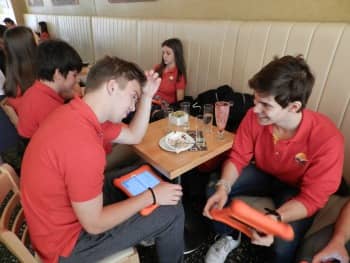 Organisers came up with presenting their students with sweets from international companies such as Ferrero Rocher, Oreo or Delhaize, and make these products that students consume virtually every day, their new research materials.
Organisers came up with presenting their students with sweets from international companies such as Ferrero Rocher, Oreo or Delhaize, and make these products that students consume virtually every day, their new research materials.
Students inspected tags and labels of these sweets and drinks, guessed the countries from which they come, and found their locations on the world map. They learned a lot about these countries’ capitals, their regulations, what they’re famous for and why they should consider visiting them.
On another occasion, within their English lesson, our students were given a chance to try the delicacies coming from different parts of the world such as USA, France or Italy. They enjoyed a creamy tiramisu, a biting capri cake, sweet coffee latte, or fruity cheesecake.
By commenting these desserts, the students met and accepted parts of cultures of the countries that bred these delicacies. Besides, they also practiced their writing skills and conversation in English, describing these desserts and their most dominant features.
Filling in passports in history lessons
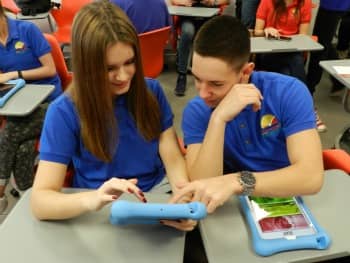 Within their history lessons, our students described their country and its cultural background so that they could compare it to other countries they wished to visit, in order to finding their partner school.
Within their history lessons, our students described their country and its cultural background so that they could compare it to other countries they wished to visit, in order to finding their partner school.
They will send a letter to their chosen school explaining why these two countries should pair up and establish a cooperation.
They filled in international passports with the information that people abroad would find useful and interesting about their country and its origins.
This was just one of numerous ideas that suggested them how to get in touch with schools abroad.
Every language is wonderful and relevant
Within English lessons, our students also had an opportunity to perceive language from various different aspects through learning words from languages such as Greek, Russian, Italian and Portuguese.
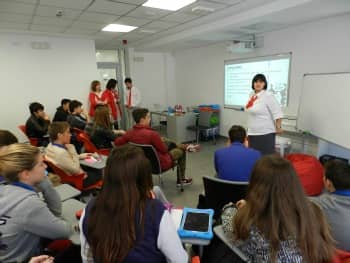 They learned, for example, that Greek word “nai” had a different meaning from what the students expected. Also, they found out that Russian “slovo” is a word and that “academia” is Portuguese for a gym.
They learned, for example, that Greek word “nai” had a different meaning from what the students expected. Also, they found out that Russian “slovo” is a word and that “academia” is Portuguese for a gym.
This way they were introduced to potential language barriers if they decided to continue their education somewhere abroad. They also listened to songs written in other languages and try to repeat the lyrics, even though they didn’t understand them.
These were two very famous songs, from a video game and a film, „Why this Kolaveri Di” and „Baba Yetu” that were written in Tanglish and Swahili. These languages represented a novelty to our students and should indicate cultures differences they might encounter on an international level.
Good education - a road to safe future
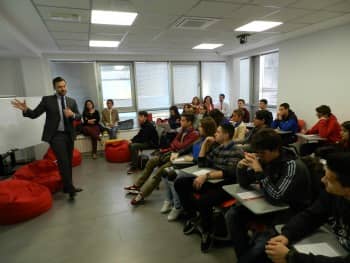 The International Education Week started with a presentation of Les Roches and Glion Universities from Switzerland and distribution of vouchers for that evening’s Global Hospitality Education lecture held in Crowne Plaza hotel in Belgrade.
The International Education Week started with a presentation of Les Roches and Glion Universities from Switzerland and distribution of vouchers for that evening’s Global Hospitality Education lecture held in Crowne Plaza hotel in Belgrade.
The goal of the International Education Week is to awaken the students’ interest for other schools and universities and provoke participation in international education projects.
It is crucial for our students to have an insight into all the advantages they can gain by partaking in international education and become part of a system that provides various possibilities regarding personal development.
More pictures in our gallery.

